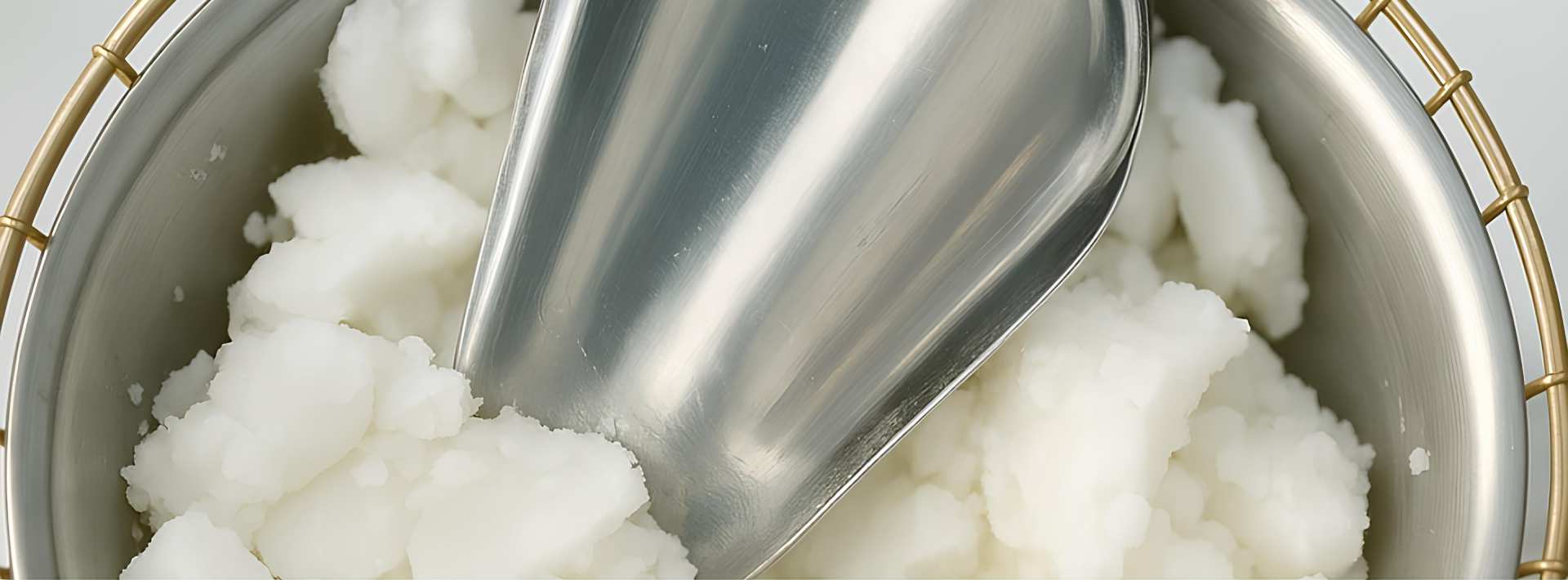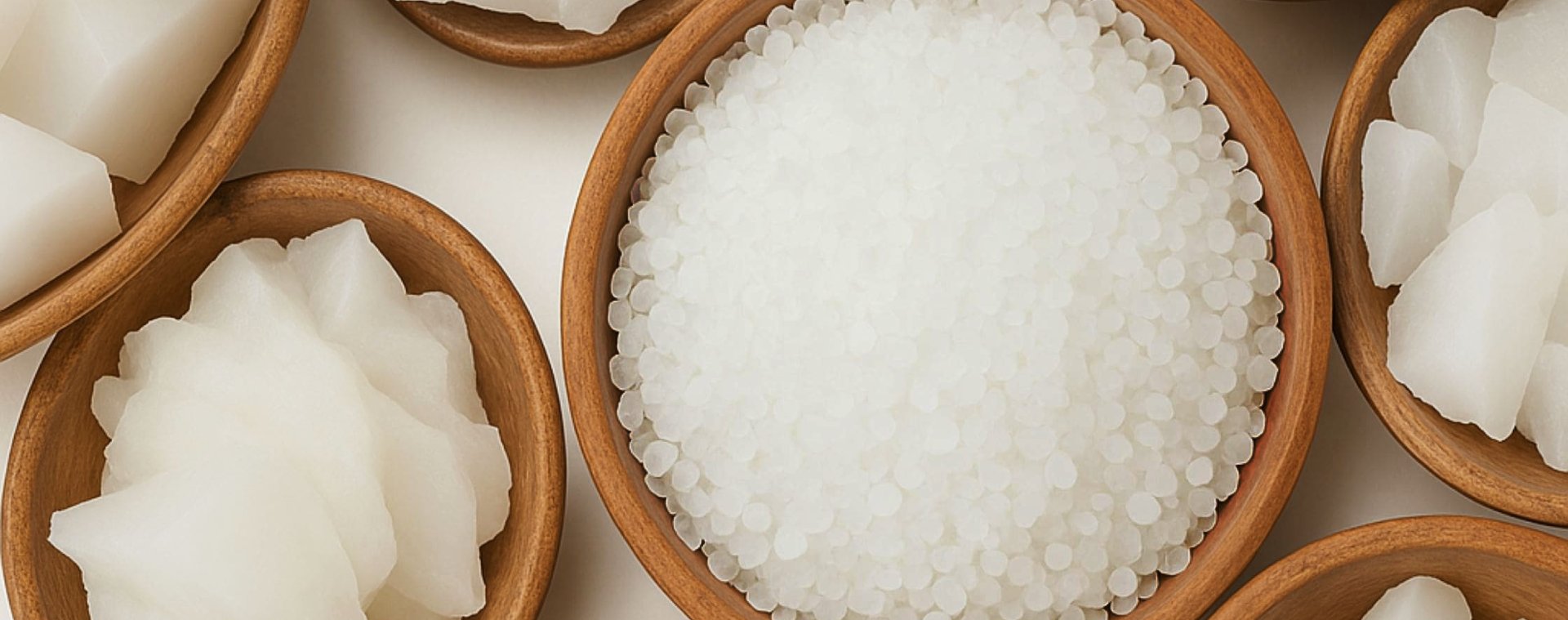
Among all types of waxes Paraffin stands out as one of the most versatile options. The petroleum and coal or oil shale derivative serves numerous industries by fulfilling their production requirements starting from cosmetics all the way to manufacturing.
Americans commonly use paraffin wax in scented candles because it provides them with an even and unspoiled burning experience. The application scope of this wax extends well past its common usage in candles. Warm spa treatments incorporate paraffin wax for skin nourishment because the material provides effective hydration giving dry and rough skin a soft and smooth texture.
Its versatility extends into multiple uses including its presence in lubricants along with polishes and crayons demonstrating its broad applicability. It is worth noting that one of the key competitors in the market of paraffin wax is soy wax. But what makes these two types of wax so similar, and what are the main differences? Which one is more cost-effective, and what are their chemical building blocks?
This article examines the practicality of paraffin wax usage while exploring its advantages and industrial applications and its ratio against soy wax as well as its free choice status for both manufacturing and personal applications.

The solid substance known as paraffin wax derives from petroleum refining processes where it appears colorless or white. This wax offers stability and nonreactive characteristics which enable its broad usage throughout various industries such as candle production and packaging together with cosmetics.
A hydrocarbon makes up the base composition of paraffin wax with the chemical makeup CnH2n+2. The "n" value in the chemical notation signifies the carbon atom count that controls both texture and the final product consistency.
Through this composition paraffin wax receives its distinctive waxy texture and achieves excellent performance in applications requiring high purity standards.The melting point of this substance ranges between 46°C to 68°C.
The thermal adaptability of this mineral wax makes it suitable for precise applications in the manufacturing field including coating production as well as mold identification products and therapeutic paraffin soaking solutions.
Standard applications benefit from rigid performance with clean burns because of the straightforward structure that makes paraffin less flexible than microcrystalline wax. Current industrial practices use paraffin wax across multiple applications because this material stands as a dependable option for diverse workplace needs.
Soy and paraffin often represent a challenging choice because their advantages bring unique benefits to the table. The decision between paraffin and soy wax demands careful consideration because they differ in beneficial ways.
The petroleum-derived paraffin stands as an opposition to the renewable soy wax source that stems from soybean oil which breaks down easily. Sustainability stands strongest with soy wax as its main benefit. Paraffin wax burns for longer periods and releases stronger fragrances into the space giving it an advantage over soy wax for enhancing the aroma in large rooms.
Eco-conscious buyers will benefit from soy wax because it generates fewer pollutants which results in cleaner flame compared to other wax types. Let’s break down the main key differences between the two material:
People who want longer burn time combined with potent scent should consider using paraffin candles. Soy wax stands ahead of paraffin when you wish to protect the environment while maintaining fresh air.

Since ancient times paraffin remains one of the most preferred materials for candle creators. The product supports a uniform flame distribution which produces candles of dependable quality at each lighting.
One of its biggest advantages? Paraffin wax maintains color and fragrance very effectively. This characteristic helps this type of wax become a preferred choice for both individual candlemakers as well as commercial manufacturers who seek vibrant scented products with extended longevity.
Cost is another major factor. Organizations that manufacture many candles should opt for paraffin wax because its low cost makes it a better option than natural alternatives. The utility of this wax material extends to its ability to assume any desired format whether traditional pillar candles or unique decorative formations. Paraffin serves as a solid affordable base to make cost-effective or luxurious smelling candles that look attractive and burn efficiently.
Most people consider paraffin wax an essential component of beauty treatments because it successfully restores skin moisture and makes it supple. People can experience instant hydration through paraffin use regardless of spa or home environments as it creates a smooth and soft skin texture.
Approximately 210 million people enjoy paraffin wax baths as their chosen therapy during professional spa visits. These softening agents enhance blood circulation and offer relaxation benefits which make them a luxury component of self-care activities.
Paraffin also provides various benefits which extend beyond its cosmetic applications. Users benefit from paraffin wax through its therapeutic healing aspects that especially help individuals dealing with arthritis or joint-related pain conditions.
Health benefits include improved blood flow and relaxed stiff muscles while providing soothing comfort to patients through pain management methods. In the beauty and wellness world professionals value paraffin wax because it provides skincare benefits along with relaxation effects and offers therapeutic relief.